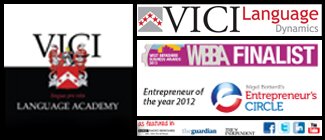Sir John Madjeski Chairman Reading FC

Issue 04 – Sir John Madejski walks into Reception to greet me personally and then leads the way into the atrium at The Madejski Stadium. The Chairman of Reading Football Club is tall, slim and elegantly dressed in a dark suit and expensive leather shoes. We settle down on comfortable sofas around a low table in a corner of the bar area. A waiter appears very quickly and we order coffee.
In 2010 the self-made businessman – and Auto Trader founder – slipped 87 places in the Rich List to a measly 309th and says that his personal wealth is “out there creating jobs”. Sir John Madejski (he corrects my pronunciation and although I am mortified I have the feeling this is a frequent occurrence for him) has been Chairman of Reading Football Club for 20 years. It is “a long time” he says and sounds rather bemused by the fact. Although he jokes a lot as we begin the interview, Sir John certainly appears very comfortable in his role as Chairman.
I recall when the new construction of the Madejski Stadium was announced and mention that back in 1998, I lived just around the corner from Elm Park (the old stadium). I ask Sir John now how much of a challenge it was to move Reading FC’s home ground from Tilehurst and whether the response from fans was positive.

“Of course there were die-hard fans who were initially unhappy but once they came here they were over the moon”, he says. “The stadium is a community club that serves the whole area. It is a place to socialise, the organic heart of the local area.”
The stadium complex is certainly versatile. It is also home to Reading 107 FM, The Jazz Café and the Millennium Madejski Hotel. The London Irish Rugby Club has been in situ for six years.
Sir John rescued Reading FC from the jaws of the Receivers in 2006 and they currently sit mid-table in division below the top flight. I ask him how difficult it was to keep key players on side when the club was relegated from the Premiership.
“Of course players want to be involved at the Premiership level. To begin with it means a great deal to them financially, and you have to live with that. From the Club’s point of view you have to cut your coat according to your cloth“.
I wonder whether he takes a hands-on role at Reading, for instance, in the manager’s decisions both on and off the pitch. “I’m the Chairman and I have my responsibilities. The CEO has his responsibilities and the manager has his. In no way do I get involved.” He pauses then adds, “However, the manager lives and dies by his sword. If something were to go drastically wrong then I would intervene”.
In view of frequent discussions around the profile of women’s football – and the fact that the women’s club at Reading FC are apparently currently performing better than the male team – I ask Sir John whether he sees women’s football as a fast-growing sport internationally. He emphatically refuses to be drawn into the debate. “Vive la différence is what I say. We recently won the Football League Family Club of the Year Award and have a long term strategy in place to increase the number of female supporters,” Sir John tells me. The club aims to increase awareness and interest in the Reading FC Women’s team and hope this will inspire young female supporters to become involved in their local football club.
Sir John is a benefactor of numerous art institutions and, locally, there is a Madejski Gallery in Reading Museum. He is also chancellor of Reading University. I wonder whether he believes in good old fashioned philanthropy as practised by the Victorians.
Sir John has been quoted as declaring, “We come into this world with nothing and we leave it with nothing. For me it’s all about the community,” and he repeats this to me now. Awarded an OBE in 2000 and Knighted in 2009 for services to charity, it is no secret that he donated £500,000 to the Falklands Island Memorial Chapel situated in Pangbourne College and supports many charities.
Sir John has been very generous with his time but even as this now draws to an end, he offers a personal tour of the stadium. As we get up to leave Sir John settles the bar bill with cash.
As we negotiate the warren of offices en route to the empty stadium he chats to the staff in the reception area, in the corridors and offices. Appearing relaxed he calls everyone by their first names. In return, however, they address him as ‘Chairman’ in reverential tones. During our chat Sir John has been quite candid about his past – his birth was the result of a wartime affair and he was put into care until his mother later married and he took his stepfather’s name – and he has the air of a man who wears his heart on his sleeve. His story has been described in the press as one of “Poor Man, Rich Man “. There is no denying that he has achieved a great deal in his life and, in not forgetting his roots, he believes in putting something back into the community and that can only be applauded.
Did you Know:
 The crest design is based on the club colours, blue and white, a crown representing royal sovereignty for the County of Berkshire and an image of Reading’s most famous landmark, the Maiwand Lion.
The crest design is based on the club colours, blue and white, a crown representing royal sovereignty for the County of Berkshire and an image of Reading’s most famous landmark, the Maiwand Lion.
Reading F.C. were formed on 25 December 1871, the Football League until 1920.
The Stadium’s highest attendance to date was 24,134 for the Premiership game with Manchester United in January 2008.
The first game staged here was a 3-0 victory against Luton Town on 22nd August 1998, played in front of 18,108 supporters.
The Stadium houses 28 Executive Suites, all with excellent views overlooking the pitch.
Reading FC Chairman Sir John Madejski earned his fortune by founding the hugely successful Auto Trader magazine, and was awarded the OBE in 2000.
The four-star deluxe Millennium Madejski Hotel is operated by the Millennium Copthorne group.
The metallic posts topped with cylindrical discs surrounding the stadium are methane gas vents, built to accommodate the underground build-up of gases – the stadium was built on the site of a household waste dump!
There are long-term plans to build a rail link from the town centre to nearby business centre Green Park.
The pitch incorporates a complicated system of synthetic fibres interwoven with the natural grass – the renowned ‘Desso’ system, installed at a substantial cost.
The Royal Berkshire Conference Centre boasts one room with a capacity of 700, and four accommodating 100.
The Stadium’s East Stand houses the Jazz Café, a fashionable live music venue.
Radio station Reading 107 are also housed in the East Stand.








